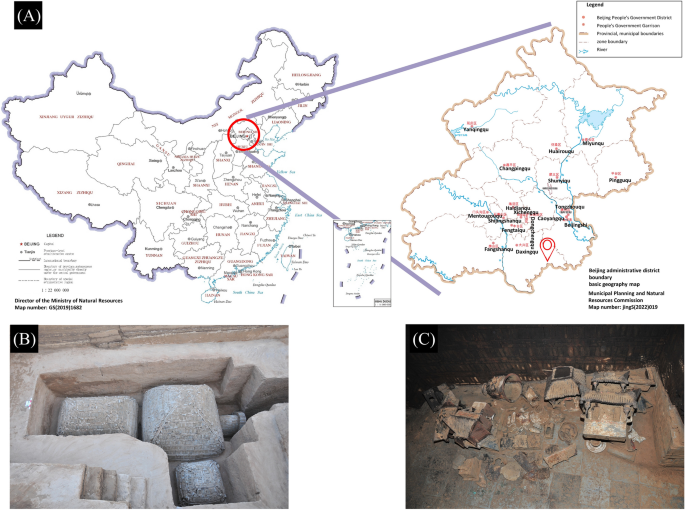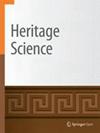汉代墓葬出土的陶塔中使用的古代颜料的多分析方法
IF 2.6
1区 艺术学
Q2 CHEMISTRY, ANALYTICAL
引用次数: 0
摘要
2013年,在中国北京东南部发现和挖掘了几座古墓,发现了各种各样的陪葬品。其中有陶器塔,这是该地区罕见的汉代代表性文物。基于出土的陶塔,对建筑类型、建筑情况等建筑方面的研究较多,但对其原料或颜料的考察较少。在本研究中,通过多重分析方法,黑色、白色和红色色素分别被鉴定为炭黑、方解石和朱砂。根据颜料的晶体形态和粒度,考虑到颜料的成分分析和晶体结构分析无法区分的颜料特性,确定了颜料的制备方法。我们建议在未来准备和使用一个连续的数据库,不仅用于解释古代颜料,而且用于确定在估计制造过程和保存处理时要考虑的因素(物理特性,如颜料粒度等)。本文章由计算机程序翻译,如有差异,请以英文原文为准。

A multi-analytical approach to identify ancient pigments used in pottery towers excavated from the Han Dynasty tombs
Abstract In 2013, several tombs were discovered and excavated in Southeastern Beijing, China, yielding various burial products. Among these were pottery towers, a representative artifact of the Han Dynasty rarely found in the area. Many studies on architectural aspects, such as construction type and construction situation, have been conducted based on the excavated pottery towers, but only a few have examined their raw materials or pigments. In this study, black, white, and red pigments were identified as carbon black, calcite, and cinnabar, respectively, through a multi-analysis approach. The manufacturing method of the pigment was established based on the crystal form and particle size of the pigment, by factoring in the pigment characteristics, which cannot be distinguished by component analysis and crystal structure analysis. We recommend that a continuous database be prepared and used in the future, not only for an interpretation of ancient pigments but also to identify the factors to be considered (physical characteristics, such as pigment particle size among others) when estimating the manufacturing process and conservation treatment.
求助全文
通过发布文献求助,成功后即可免费获取论文全文。
去求助
来源期刊

Heritage Science
Arts and Humanities-Conservation
CiteScore
4.00
自引率
20.00%
发文量
183
审稿时长
19 weeks
期刊介绍:
Heritage Science is an open access journal publishing original peer-reviewed research covering:
Understanding of the manufacturing processes, provenances, and environmental contexts of material types, objects, and buildings, of cultural significance including their historical significance.
Understanding and prediction of physico-chemical and biological degradation processes of cultural artefacts, including climate change, and predictive heritage studies.
Development and application of analytical and imaging methods or equipments for non-invasive, non-destructive or portable analysis of artwork and objects of cultural significance to identify component materials, degradation products and deterioration markers.
Development and application of invasive and destructive methods for understanding the provenance of objects of cultural significance.
Development and critical assessment of treatment materials and methods for artwork and objects of cultural significance.
Development and application of statistical methods and algorithms for data analysis to further understanding of culturally significant objects.
Publication of reference and corpus datasets as supplementary information to the statistical and analytical studies above.
Description of novel technologies that can assist in the understanding of cultural heritage.
 求助内容:
求助内容: 应助结果提醒方式:
应助结果提醒方式:


